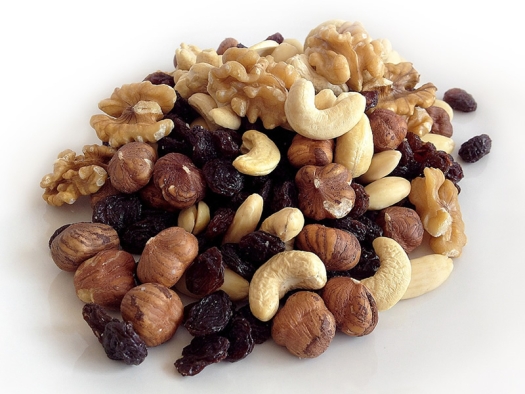TrailMixNutsRaisins.jpg

Photo by ecogreenlove / Pixabay
Life is happier when the kids are fed. If you think that’s easier said than done, try these build-your-own snack ideas to calm that ravenous after-school hunger.
Even if different kids have different tastes, these snacks give them the freedom to choose their favorite flavors, while keeping it healthy for everyone.
- BYO Trail Mix: Set out an assortment of nuts, seeds, dried berries, coconut flakes, and (if you’re feeling indulgent) chocolate chips. Let the kids create their own favorite version of trail mix.
- BYO Boosted Fruits: Offer up a few different fruits (like apples, bananas, & strawberries), some nut butters (like peanut almond, and cashew), and some items to sprinkle on top (like coconut flakes or hemp seeds). Let the kids mix and match!
- BYO Smoothie: Help the kids learn about nutrition by creating a cheat sheet for building a smoothie. Have them choose at least one item from each ingredient category (like a fruit or vegetable, protein, fat, and liquid).
When putting together snacks for the kids, remember the Environmental Working Group list of the dirty dozen fruits and vegetables.
- Strawberries: Conventional strawberries consistently top the Dirty Dozen list. In 2018, the EWG found that one-third of all strawberry samples contained ten or more pesticide residues.
- Spinach: 97% of spinach samples contained pesticide residues, including permethrin, a neurotoxic insecticide that is highly toxic to animals.
- Nectarines: The EWG detected residues in nearly 94% of nectarine samples, with one sample containing over 15 different pesticide residues.
- Apples: The EWG detected pesticide residues in 90% of apple samples. What’s more, 80% of the apples tested contained traces of diphenylamine, a pesticide banned in Europe.
- Grapes: Conventional grapes are a staple on the Dirty Dozen list, with over 96% testing positive for pesticide residues.
- Peaches: Over 99% of the peaches tested by the EWG contained an average of four pesticide residues.
- Cherries: The EWG detected an average of five pesticide residues on cherry samples, including a pesticide called iprodione, which is banned in Europe.
- Pears: Over 50% of pears tested by the EWG contained residues from five or more pesticides.
- Tomatoes: Four pesticide residues were found on the conventionally grown tomato. One sample contained over 15 different pesticide residues.
- Celery: Pesticide residues were found on over 95% of celery samples. As many as 13 different types of pesticides were detected.
- Potatoes: Potato samples contained more pesticide residues by weight than any other crop tested. Chlorpropham, an herbicide, made up the bulk of the detected pesticides.
- Sweet bell peppers: Sweet bell peppers contain fewer pesticide residues compared to other fruits and vegetables. Yet, the EWG cautions that pesticides used on sweet bell peppers “tend to be more toxic to human health.”
EWG releases a Dirty Dozen Plus list that contains 36 more fruits and vegetables that have high levels of pesticide residues, including hot peppers, cherry tomatoes, snap peas and blueberries.
Revised by Joanne Quinn, PhD; content provided by Wellnesswriter.com.


